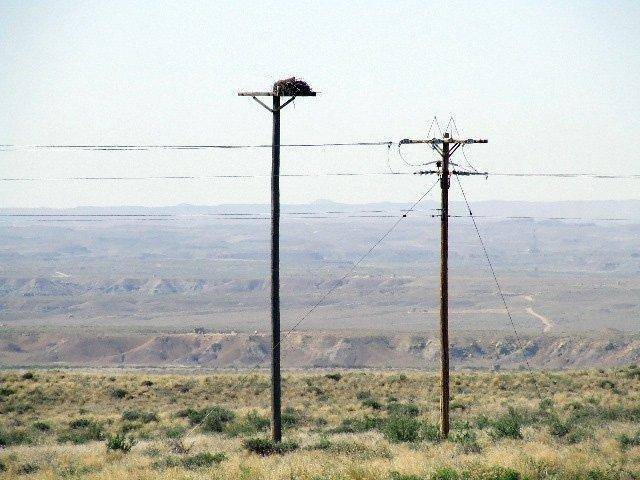Price — Three organizations teamed up recently to help a bird on Utah’s state sensitive species list.
In east central Utah, the greatest threat to the ferruginous hawk are suitable places to nest. But with help from PacifiCorp, suitable nesting sites are appearing in the desert.
While raptors in other ecosystems can nest on vertical cliffs or tall trees, suitable nest sites in the desert are harder to come by. Ferruginous hawks often resort to nesting on hilltops, low buttes, rocky outcrops or the crowns of juniper trees. Unfortunately, all of these nest sites are vulnerable to ground predators, which can enter the nests and kill the young.
To help ferruginous hawk populations in the Cisco Desert, PacifiCorp (which operates as Rocky Mountain Power in Utah) recently teamed with the Bureau of Land Management and the Division of Wildlife Resources to construct pole-mounted nesting platforms. Constructing these tall platforms gives the hawks a place to nest that’s beyond the reach of ground predators. The process and equipment used to install the structures are similar to the process and equipment used to erect power poles.
“The decline of ferruginous hawk populations is a serious concern,” says Sherry Liguori, lead avian biologist for PacifiCorp. “We’re pleased that PacifiCorp, the DWR and the BLM can partner on projects like this that benefit the species.”
Throughout its range in the western United States, ferruginous hawk populations are in decline. The decline is causing increasing concern among conservationists and the agencies that are charged with the hawks’ welfare. Tony Wright, a regional sensitive species biologist for the DWR, says the potential threats to the ferruginous hawk are the reason the hawk has be en classified as a state sensitive species in Utah. That classification allows the bird special attention under Utah law. “We take potential threats and negative population changes seriously,” Wright says. “We counter these threats with mitigation measures to try to prevent the population from declining further.”
The recent nest structure project is an example of actions the DWR and its partners are taking to keep the species from being listed as threatened or endangered on the federal Endangered Species list.
“We hope the nesting platform project will increase the nesting success of a hawk that plays an important role in a desert ecosystem that also supports other species of concern,” Wright says, “including white-tailed prairie dogs, burrowing owls and kit foxes. We greatly appreciate the employees and the management of PacifiCorp and the BLM who made this project happen.”
A desert species, the ferruginous hawk can be identified by its rusty-red leggings, which contrast against a lightly colored breast and belly. Dark morph ferruginous hawks, which are uniformly dark on their undersides, are less common. For more information, call the DWR’s Southeastern Region office at (435) 613-3700.

